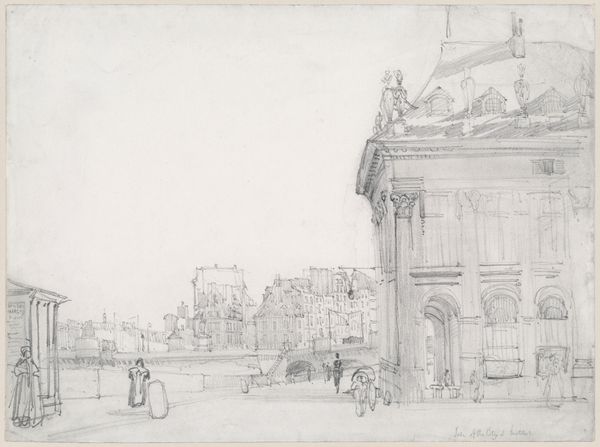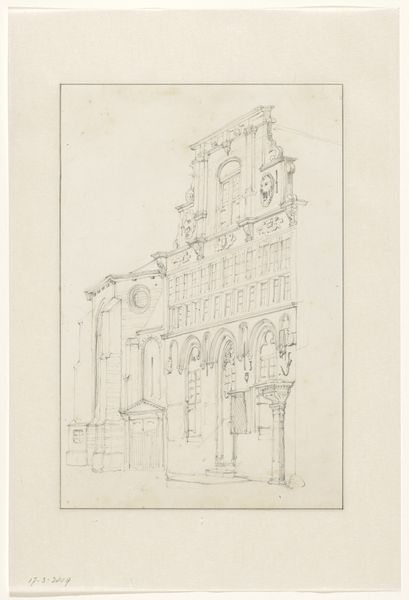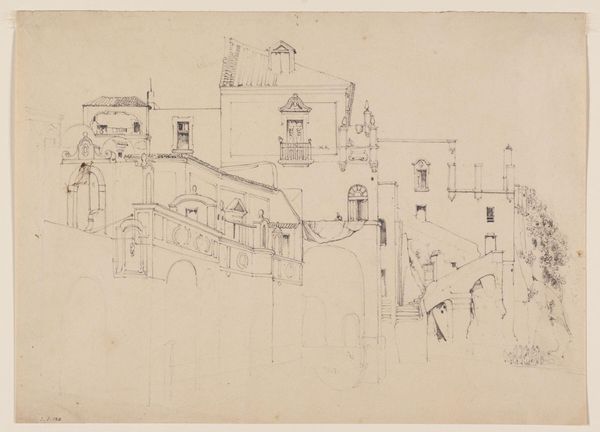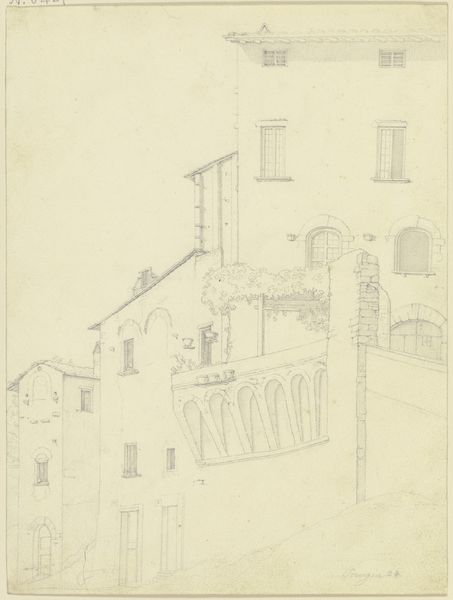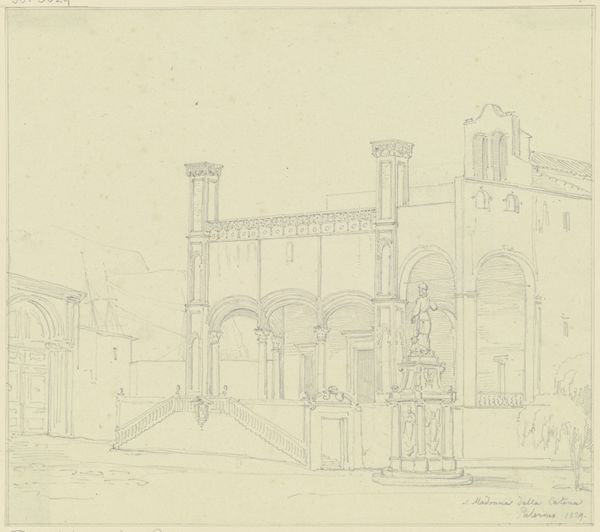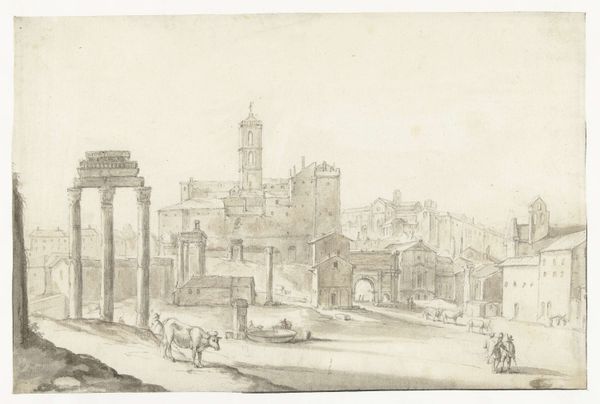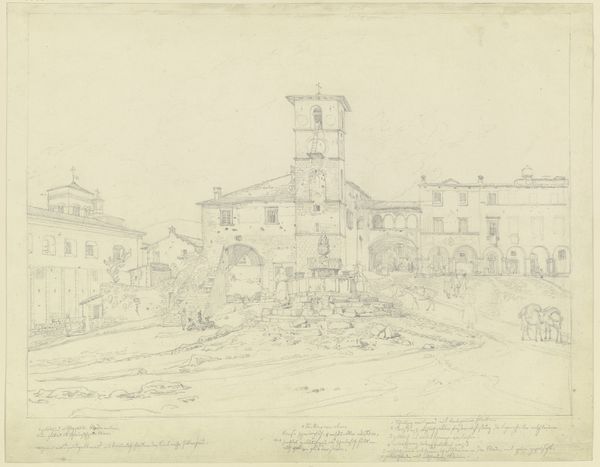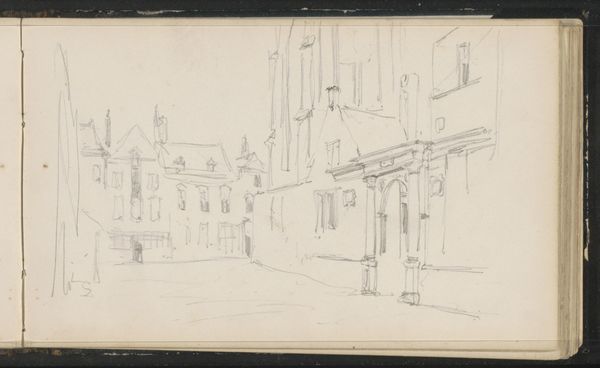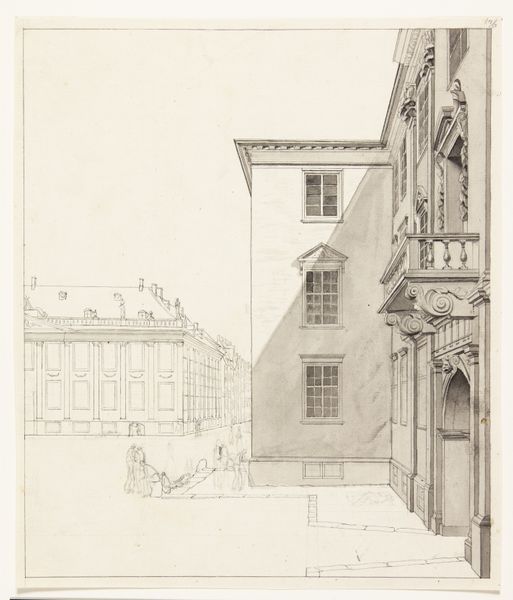
View of the South side of the church of Santi Giovanni e Paolo in Venice, with Verrocchio's statue of Bartolomeo Colleoni 1807 - 1878
0:00
0:00
drawing, print, sculpture, pencil, graphite
#
drawing
# print
#
pencil sketch
#
etching
#
sculpture
#
pencil
#
graphite
#
cityscape
Dimensions: sheet: 14 13/16 x 18 1/4 in. (37.7 x 46.3 cm)
Copyright: Public Domain
Curator: Welcome. We're looking at Friedrich Nerly’s "View of the South side of the church of Santi Giovanni e Paolo in Venice, with Verrocchio's statue of Bartolomeo Colleoni." It likely dates from sometime between 1807 and 1878. Editor: It's fascinating to see Venice rendered with such restraint. The delicate pencil lines create an almost ghostly impression. Curator: The artist has chosen a low vantage point, emphasizing the towering church and equestrian statue. It places the viewer in the position of a pedestrian, navigating the urban space. Consider how Venice was being perceived in the 19th century—as a site for tourism, history, and political commentary. Editor: Exactly. Notice the pencil strokes capturing light on stone and bronze, suggesting texture through minimal mark-making. It almost dematerializes the imposing architecture into pure light and shadow. How fascinating is this etching, translating those detailed strokes and rendering architecture? Curator: And the choice to depict a statue—it wasn't just representing a public monument, it was reproducing and thereby controlling the image of a specific political figure, especially potent in the shifting landscape of European power during the period. The role of art as documentation here can not be overstated. Editor: I agree completely. I mean, the labor put into rendering each architectural element; each brick, each window. And it becomes accessible through these prints and drawings in ways other artworks couldn't at the time. A fascinating glimpse into production and consumption, a democratization of image, really. Curator: Absolutely, but how did Nerly circulate these works? It speaks volumes to his status as an artist, whether he did private sales or participated in a formal exhibition. The distribution is crucial, influencing audience and thus impacting the political narrative being produced. Editor: I am glad you point this out! Considering its form and availability, it seems as though his images served an alternative economy of art at the time. To render and then etch such a cityscape reflects, too, on how artists began documenting what they saw, and offering versions for a wider market, which ultimately shifted how and what artists chose to create. Curator: So next time you visit Venice, or see it represented in art, consider how the artistic portrayal also engages in creating—and negotiating—a socio-political perspective. Editor: Exactly! Now when viewing cityscapes like this, maybe even consider what type of labor, tools, and circulation gave that cityscape a form.
Comments
No comments
Be the first to comment and join the conversation on the ultimate creative platform.


